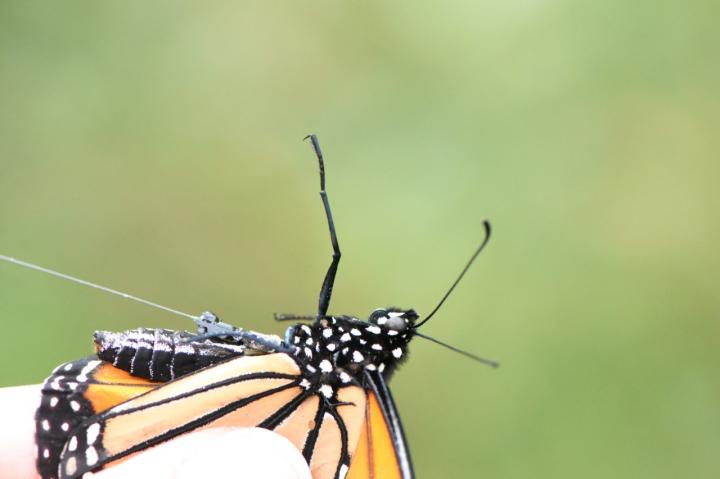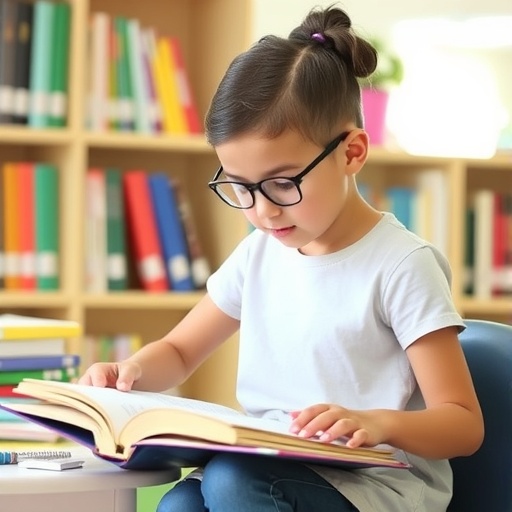While captive rearing may cause temporary disorientation, researchers found if Monarchs are given time in the wild to calibrate their internal compasses they can fly in the proper direction
Monarch butterflies raised indoors still know how to fly south if given enough time to orient themselves, according to new University of Guelph research.
The finding is good news for the many nature lovers and school students who raise monarchs and then set them free to help boost struggling numbers.
Monarchs are the only butterfly known to make a long-distance migration to warmer wintering grounds. While those born in the spring and early summer live only from two to six weeks, those that emerge in the late summer sense environmental signals that tell them to fly thousands of kilometres south, to central Mexico.
Recent U.S. studies have suggested that captive-raised monarchs become disoriented when they emerge from their cocoons and cannot fly south. But this new research, led by U of G PhD student Alana Wilcox and integrative biology professor Dr. Ryan Norris, finds that may not be true.
Wilcox said previous research was conducted only in a “flight simulator,” involving placing the butterflies into an open vessel and then gauging which direction they try to fly. The U of G team used a flight simulator but also tracked a second group of monarchs that were released in the wild after being equipped with tiny radio transmitters.
Those butterflies showed proper southward orientation, if given enough time to get their bearings.
“We believe the reason why the monarchs released in the wild flew in the proper direction is likely because they had time to calibrate their internal compasses after being released, which ensured they flew in a southerly direction,” said Norris.
The new study appears in the journal Conservation Physiology. Integrative biology professor Dr. Amy Newman and Dr. Nigel Raine, a professor in U of G’s School of Environmental Sciences, contributed to the research.
The team came upon the finding almost by accident. They had been investigating whether monarch caterpillars raised on milkweed grown in soil with a neonicotinoid pesticide would have trouble migrating once they moulted into butterflies.
They found the pesticide did not appear to affect the butterflies’ migration. But they noticed differences between the monarchs tested in the flight simulator and those that had been raised in the same conditions and released in the wild with radio transmitters.
Only 26 per cent of monarchs tested in the flight simulator (10 of 39 butterflies) showed a weak southward orientation after several minutes of testing; the rest flew in all directions. But almost all the radio-tracked butterflies (28 of 29, or 97 per cent) flew in a south-to-southeast direction from the release site and were detected at distances of up to 200 kilometres away.
“Our results suggest that although captive rearing of monarch butterflies may cause temporary disorientation for monarchs, once butterflies have been exposed to sunlight and natural skylight cues, they can establish proper orientation using their sense of proper flight direction,” Wilcox said.
This process of orientation after release from captivity can take between 24 and 48 hours, added Norris.
The findings are good news for the thousands of butterfly enthusiasts and educators concerned that raising endangered monarchs in captivity might hamper their instinct to fly to their wintering grounds in Mexico.
The team notes the findings apply only to late-summer monarchs, which perceive environmental cues such as shorter days as signs that it’s time to migrate to Mexico.
“Though the environmental conditions in our experiment might differ for monarchs reared by hobbyists, our results suggest that captive rearing remains a valuable educational tool for highlighting the natural history and biology of butterflies,” said Norris.
###
Contact:
Dr. Ryan Norris
[email protected]
Media Contact
Dr. Ryan Norris
[email protected]
Original Source
https:/
Related Journal Article
http://dx.





